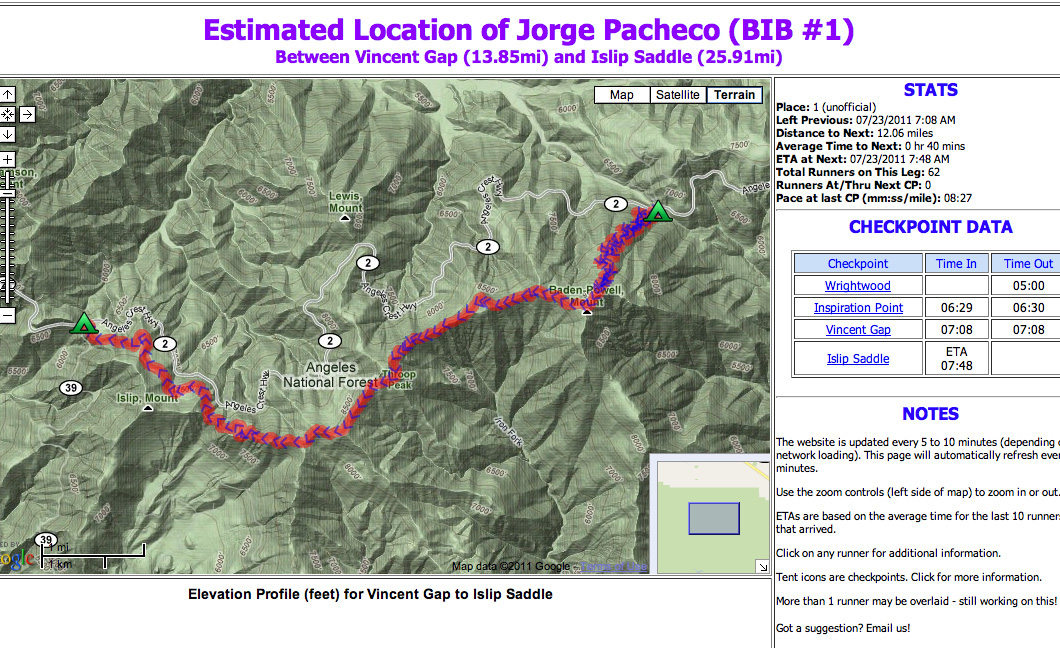The Angeles Crest 100 Mile Trail Race began in 1986 and had runners starting from Wrightwood, a ski town in the Angeles National Forest, and ending at the Rose Bowl in Pasadena, CA with a 33 hour time limit. The US Forestry Service was reluctant to grant a Special Use Permit during the high fire danger months given the number of runners spread out over such a long distance. So I devised a system of ham radio operators that would keep track of every runner so that all runners could be accounted for between each of the 14 aid stations and finish line. That was enough to convince the USFS that it might be safe enough if they called for an evacuation and that concern was alleviated. The runner number in and out times were passed up the line aid station to aid station on a 2 meter simplex frequency and also repeated out on a private 440 repeater on Mt. Wilson to hams at the Sierra Madre Search and Rescue HQ who kept track of where every runner was last seen.
At the first races, it was noted that a significant number of runners had physical problems by the time they reached a remote aid station 68 miles into the race and needed medical evaluation. There are medical checks at aid stations about every 25 miles and the one at Chantry Flat, mile 75, could only advise and attempt diagnosis by what was described over the ham 2 meter simplex frequency. So we set up an Amateur Television transmitter - ATV - at the Newcombs aid station to transmit down live real time video and audio to the medical people at Chantry Flat. It really helped in the medical evaluations to see the runner. The med people would ask their questions over the 2 meter radio and at the same time see and get responses back on the 426.25 MHz ATV set up.
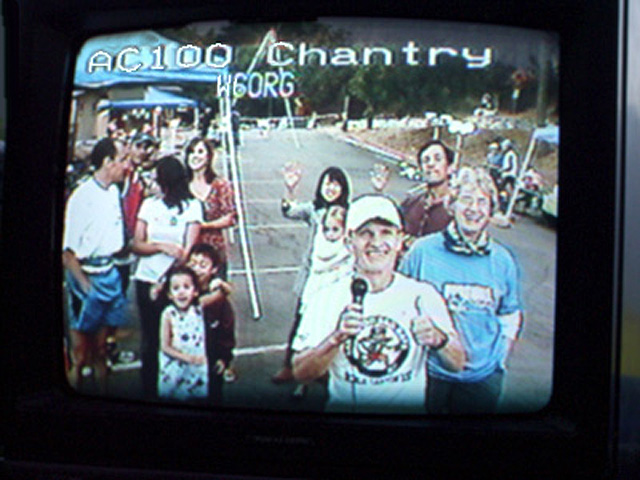
It wasn't long before the runners friends and crew took notice and wanted to talk to their runner as well. Most of the runners get to the Newcomb aid station after dark and a tough up hill climb, not to mention 68 miles on their feet. So many are down mentally as well as physically. Runners would really perk up when they heard a friendly voice of encouragement via ham radio and also to be able to tell their crew how they felt and what they would like to have waiting for them when they reached the Chantry aid station.
Since 2001 we have been running full duplex video and audio between the Newcomb and Chantry aid stations. Runners can now see as well as hear the encouragement from their crew and friends. Runners seem to be more responsive to being able to see who all they are talking to be it medical personnel or crew. I have noticed over the years it helps get them up out of the chairs and back to running the race knowing they are being watched and encouraged to keep going. It is too tempting at this point in the race to take a short nap.
Equipment wise, we currently use two of my portable "milk crate" ATV repeaters set up for duplex mode. Newcomb transmits on 426.25 MHz and receives on 1265.25 MHz analog ATV - same video standards as cable analog TV. This allows using TV's as our receiver with just the addition of a downconverter for the respective ham band to a TV channel. Really very simple and inexpensive - some TV's can receive the signal on cable channel 58 directly. Everything is self contained in the milk crate including a gel cell back up battery in case the AC generator fails as it often does at Newcombs when they don't keep the gas tank filled up.
1 Watt from the P. C. Electronics ATV transmitters connected to 10 dBd antennas - Old Antenna Labs 5L-70cm Yagi and TCR-23cm corner reflector - give good snow free video over this 5 mile line of sight path. The antennas are clamped to 3 five foot sections of Radio Shack TV masting which is then clamped to one side of the milk crate. We used to have to remember to ID over the ATV sound subcarrier, but added an Intuitive Circuits OSD-ID+ video overlay board with our calls and location - Gerry KB6OOC at Newcomb and myself at Chantry.
Other hams in the past have used ATV as an early warning when a runner was about to enter an aid station or the finish line. Placing the camera and transmitter about a quarter mile away is great for this and gathers a crowd.
Any FCC licensed Technician Class Amateur Radio operator can transmit ATV on the 420 MHz and above ham bands. ATV is used by many city and county ham emergency service groups as well as normal ham communications. There are many mountain top ATV repeaters that are linked to cover most of Southern California available. See the ATV repeater map and groups.
Photo at Right: The Newcomb aid station ATV setup was placed on one side of the ham communications canopy with the chairs for the runners to relax for a minute and possibly to see and talk to their crew and friends waiting for them at Chantry. When no runner is in the aid station, the camera is swung around to watch for incoming runners.
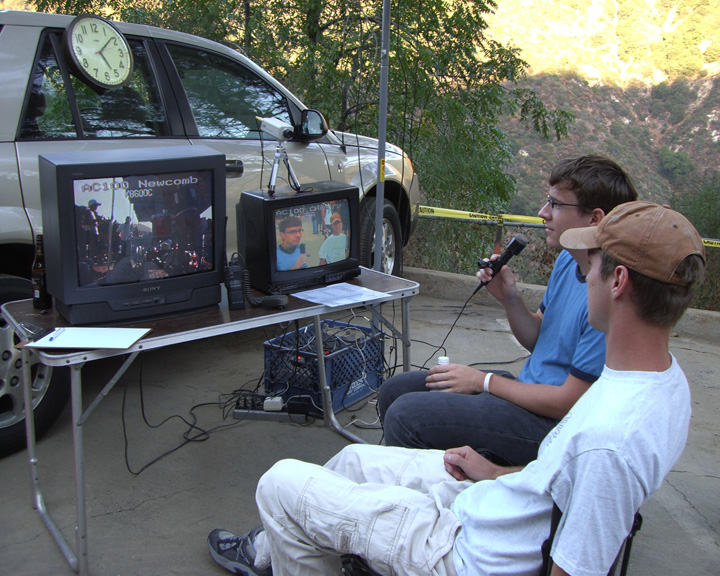
Two way live video and audio between the Chantry Flat and Newcomb AC100 aid stations via ham radio was originally set up for better medical evaluation of runners at the remote Newcomb aid station, but later crew and friends enjoy seeing and encouraging their runner as they wait for them at Chantry.
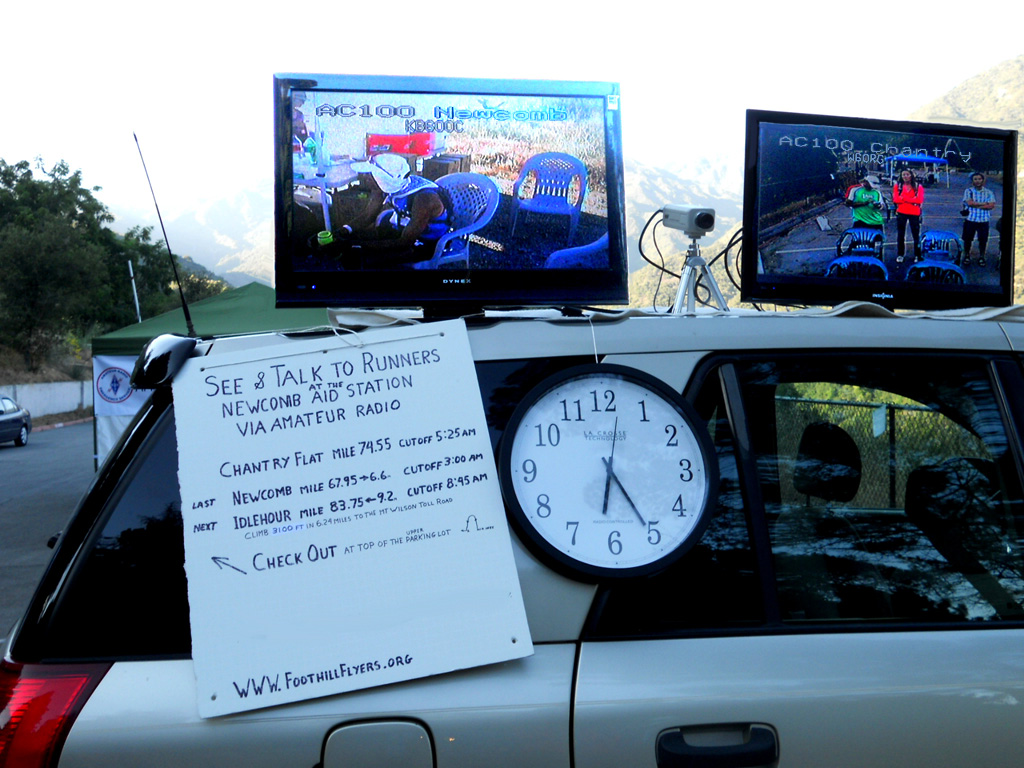
In 2011 the CRT type TV's were replaced with a larger 26" LCD flat screen TV to receive Newcomb, a 24" for the local camera transmitted picture monitor and placed atop the car for better viewing - much lighter to transport and lift too.
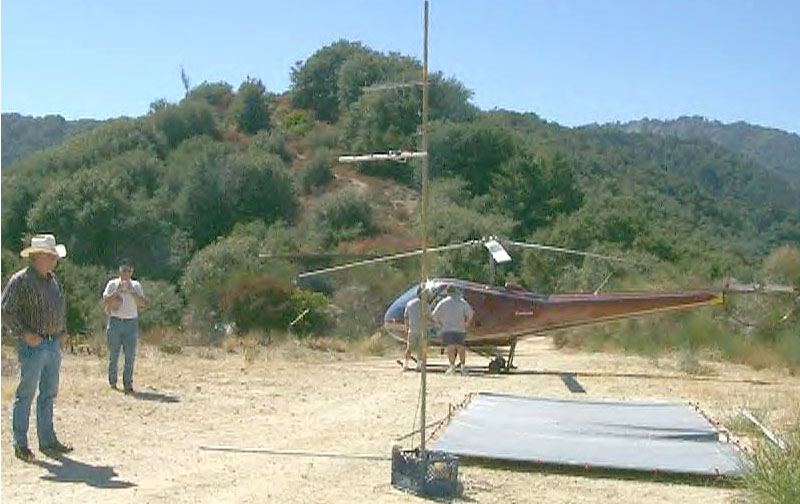
A couple of times we dropped in the milk crate ATV gear by helicopter to the Newcomb aid station.
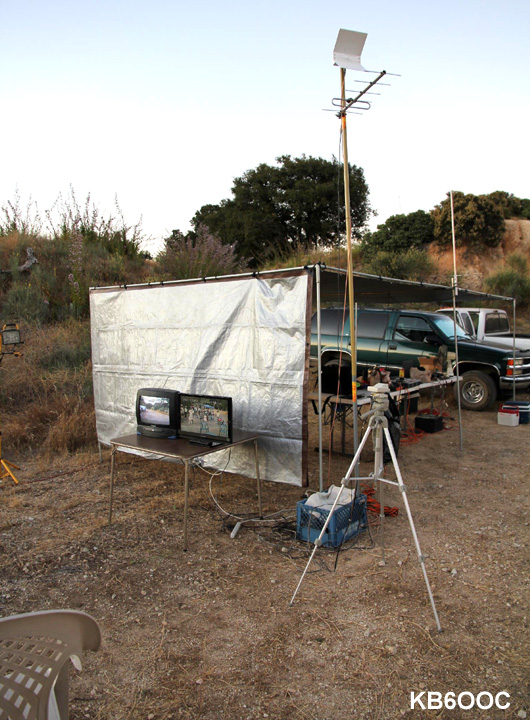
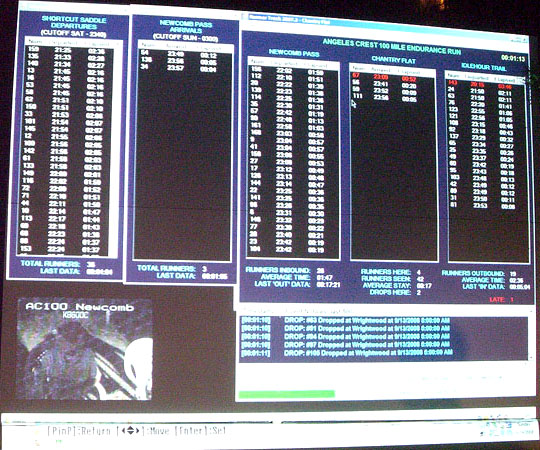 Above, runner number, arrival or departure times and elapsed time are shown within the 5 aid station columns as seen on the Chantry Flat aid station projection screen.
Above, runner number, arrival or departure times and elapsed time are shown within the 5 aid station columns as seen on the Chantry Flat aid station projection screen.
